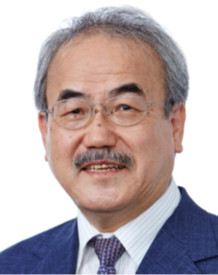A Major Earthquake Directly Under the Capital
Each of us need to prepare at once

Itsuki NAKABAYASHI
Professor Emeritus (Tokyo Metropolitan University) and Representative of the Tokyo Disaster Preparedness Week Executive Committee
September 1, 2023 will mark the centenary of the Great Kanto Earthquake that killed 105,000 people–the most devastating earthquake disaster in Japanese history. In these past 97 years, no other such great earthquake disaster has befallen the 36 million people living in the Tokyo Metropolitan Region. And yet, in the 150 years leading up to the Great Kanto Earthquake of 1923 there were eight earthquakes centered inland, directly under the capital. During this period, the area beyond the Tokyo central ward area was all farmland, so damage was minimal.
It is thought that the next Kanto earthquake will occur 200 to 400 years later, and that in the period of some 150 years leading up to that event, there will be a Magnitude 7 earthquake somewhere in the Tokyo Metropolitan Region. This will be a Tokyo inland earthquake directly beneath the capital. If it occurs under the ward area of Tokyo where the concentration of people and buildings is at its greatest, maximum damage will result.
There is a 70% probability that the first such inland earthquake will occur within the next 30 years. The government of Japan estimates that an earthquake directly beneath the southern part of Tokyo would kill 23,000 people and destroy 200,000 buildings. The subsequent fires would destroy 410,000 more buildings. This would be six times the scale of destruction of the Great Hanshin-Awaji Earthquake of 1995 and five times as destructive as the Great East Japan Earthquake Disaster of 2011.
The NHK drama Parallel Tokyo that I was involved with was based on the scenario of such an earthquake directly beneath the southern part of Tokyo. During production, I added a discussion of not only the threat of the earthquake but also how people could prepare for it. Nevertheless, just before the drama went to air, we decided on a “this is an ongoing threat” ending. As a compromise, instead of a “we’ll all get through it somehow” feel to the drama, we attempted to leave the audience with the message that the damage will not be reduced unless you the viewer become involved.
Today we are now in the middle of a novel coronavirus pandemic, a century after Spanish influenza. If an earthquake were to strike directly right now underneath Tokyo, we wouldn’t be able to gather in the evacuation centers. The coronavirus would spread through the centers like wildfire. All the people of Tokyo, the residents, the workers, and the students, would all be victims by the very next day! And yet, each person can reduce the damage by doing things for themselves. The power of “self-help” will enable us to help each other and thus to save lives. That’s the sentiment behind the subtitle of the program “Each of us need to prepare at once.” What to do? We need to talk about this and quickly start taking the steps to get ready together.
